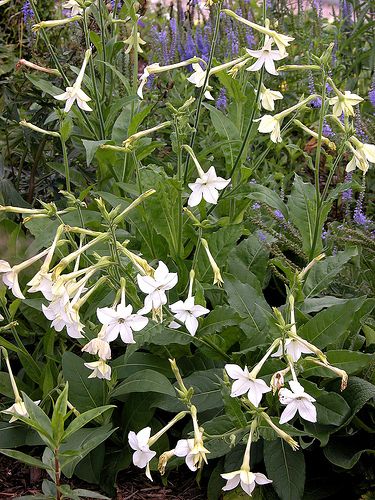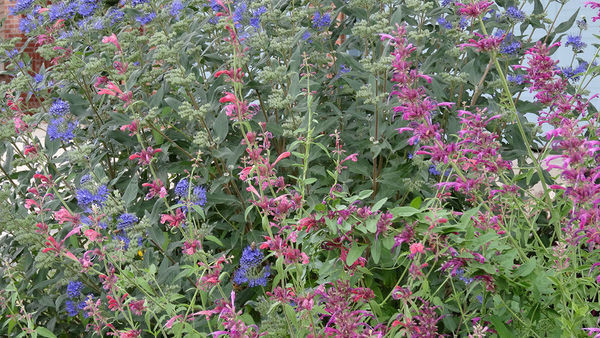
Our family has been spending many nights enjoying the summer evenings on our patio; sometimes eating dinner and sometimes just unwinding at the end of the day. Summer is the season of outdoor evenings. Which is why I’m on a mission to plant more fragrant night blooming plants.
Everyone knows that gardens should please all of the senses, not just the eyes. So we include plants for sight, scent, touch, sound, and even taste in our yards. Utilizing plants for every physical sense brings a garden fully to life as you stroll through it in the daylight hours. We often forget that our gardens can come alive in the night, as well.
You’ll need to consider a couple of things before making night-blooming plant purchases. The first thing is to be sure you understand the plant’s hardiness in your zone or area. If you can buy a night bloomer from a local nursery, you can be sure it’ll survive in your zone – for now. Ask a nurseryman if the plant is hardy through the winter months or if it’s to be treated as an annual.
Also consider exactly how fragrant the flowers are on any given species. How could this possibly matter, you ask? Well, it’s really only a problem if you choose a particularly fragrant plant such as Night-Blooming Jessamine (Cestrum nocturnum) and plant it right under a bedroom window. More than one gardener has found it impossible to sleep through the overwhelming fragrance.
I put together a list of lovely-scented nighttime bloomers to get you started. Please add to it as you discover heavenly-scented plants for your evening garden. Another idea for gardeners living in cooler climates (like north of zone 10), you can plant these nighttime lovelies in containers so they can be brought in for protection in the cold months.
- Flowering Tobacco ‘Grandiflora’ (Nicotiana alata) – Perennial in zones 9-10, but needs to be treated as an annual elsewhere. May come in a variety of colors, howeverm
- the white ones tend to be intensely fragrant. The tubular flowers at begin opening at dusk. Wonderful at self-sowing.
- Moonflower (Ipomoea alba) – Annual or perennial. Zones 8-11. Huge, bold, white flowers with a powerful scent.
- Night-Blooming Jessamine (Cestrum noctunum) – Perennial shrub. Zones 8-11. This isn’t a true jasmine, but does release a heady fragrance. Don’t place to closely to a window or next to where dinner will be served as it can get overwhelming.
- Tuberose (Polianthes tuberosa) – Perennial. Zones 7-9, 14-24. Tubular white flowers with a powerful evening ragrance.
- Four O’ Clocks (Mirabilis jalapa) Annual or perennial. Will grow in most zones. This plant’s flowers open as the temperature drops rather than the time as it’s common name implies. It reseeds easily. This plant shouldn’t be ingested as all parts can be poisonous.
- Peacock Orchid (Gladiolus callianthus) – Corms (like bulbs). Zones 4-9, 12-24. each stalk has 2-10 creamy-white flowers with chocolate centers.
- Evening Stock (Matthiola bicornus) – Annual. Zones 1-24. I find the intensely sweet fragrance of stocks completely irresistable. This goes for their daytime cousins, as well.
- *Angel’s Trumpet (Brugmansia spp.) – Tender shrub. Angel’s Trumpet is a show stopper in the garden. It seems larger than life as it grows 6-20 feet tall and the trumpet-shaped flowers are a foot long. Brugmansia’s fragrance is intoxicating. Here’s the rub. Every part of Angels’ Trumpet is extremely poisonous; it’s alkaloidal properties are used to make a narcotic. So it’s best suited in a garden situation where there are no children or pets. I mention it only because even if you aren’t inclined to plant it, it’s worth heading over to a local botanical gardens to take a peek at. Brugmansia will stop you in your tracks.
Don’t forget to strategically plant white-flowered, and silver-leafed night time bloomers like Silver Artemesias (Artemesia spp.). Unlike their rainbow-colored counterparts, these ladies reflect moonlight so you can enjoy your garden’s beauty into the night.




















Comments
Log in or create an account to post a comment.
Sign up Log in